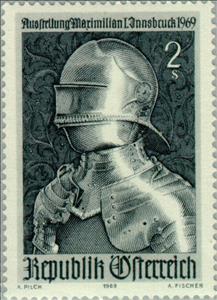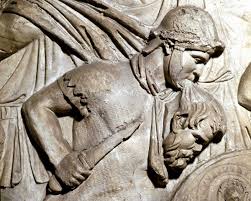Stamp: Gothic Armor from Emperor Maximilian I (1459-1519) (Austria 1969)
Gothic Armor from Emperor Maximilian I (1459-1519) (Austria 1969)
04 June (Austria ) within release Maximilian I Exhibition goes into circulation Stamp Gothic Armor from Emperor Maximilian I (1459-1519) face value 2 Austrian schilling
| Stamp Gothic Armor from Emperor Maximilian I (1459-1519) in catalogues | |
|---|---|
| Michel: | Mi:AT 1302 |
| Stamp Number: | Sn:AT 841 |
| Yvert et Tellier: | Yt:AT 1132 |
| Stanley Gibbons: | Sg:AT 1554 |
| Unificato: | Un:AT 1132 |
Stamp is vertical format.
Stamp Gothic Armor from Emperor Maximilian I (1459-1519) it reflects the thematic directions:
A head of state (or chief of state) is the public persona that officially represents the national unity and legitimacy of a sovereign state. In some countries, the head of state is a ceremonial figurehead with limited or no executive power, while in others, the head of state is also the head of government. In countries with parliamentary governments, the head of state is typically a ceremonial figurehead that does not actually guide day-to-day government activities and may not be empowered to exercise any kind of secular political authority (e.g., Queen Elizabeth II as Head of the Commonwealth). In countries where the head of state is also the head of government, the president serves as both a public figurehead and the actual highest ranking political leader who oversees the executive branch (e.g., the President of the United States).
An exposition, in the most general sense, is an organized presentation and display of a selection of items. In practice, exhibitions usually occur within museums, galleries and exhibition halls, and World's fairs. Exhibitions can include many things such as art in both major museums and smaller galleries, interpretive exhibitions, natural history museums and history museums, and also varieties such as more commercially focused exhibitions and trade fairs.
The Goths (Gothic: 𐌲𐌿𐍄𐌸𐌹𐌿𐌳𐌰, romanized: Gutþiuda; Latin: Gothi, Greek: Γότθοι, translit. Gótthoi) were Germanic people who played a major role in the fall of the Western Roman Empire and the emergence of medieval Europe



